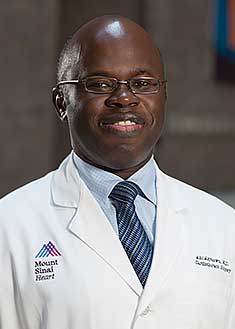Surgical Video Case Study
Why Mitral Valve Repair Surgery is the Safest Fix for Primary Mitral Regurgitation
In this discussion we review a six-year study of over 53,000 patients that reveals the extraordinary safety and durability of mitral valve repairs among patients with primary mitral regurgitation. We explore:
- Morbidity/mortality outcomes at 30 days for mitral valve repair versus mitral valve replacement
- The impact of higher volumes of mitral surgeries on lowering mortality and morbidity
- Key quality metrics, including procedural success at 30 days and one year, and durability at five years
- The four cornerstones of an excellent mitral valve repair:
- Minimize any recurrent mitral regurgitation
- Minimize the development of atrial fibrillation
- Minimize the risk of stroke by reducing the risk of blood clots or thromboembolic events from the left atrium.
- Minimize the development of late tricuspid regurgitation
Ani Anyanwu, MD
Professor and Vice Chair, Department of Cardiovascular Surgery
Icahn School of Medicine at Mount Sinai
Randolph P. Martin, MD
Clinical Professor, Department of Cardiovascular Surgery
Icahn School of Medicine at Mount Sinai
SHARE
Presentations
- Dr. David Adams performs a mitral valve repair of posterior leaflet prolapse utilizing the new Carpentier-Edwards Physio II Annuloplasty Ring.
- Dr. David Adams performs a mitral valve repair of bileaflet prolapse utilizing the new Carpentier-Edwards Physio II Annuloplasty Ring.
- Dr. David Adams performs a mitral valve repair of commissural prolapse utilizing the new Carpentier-Edwards Physio II Annuloplasty Ring.
